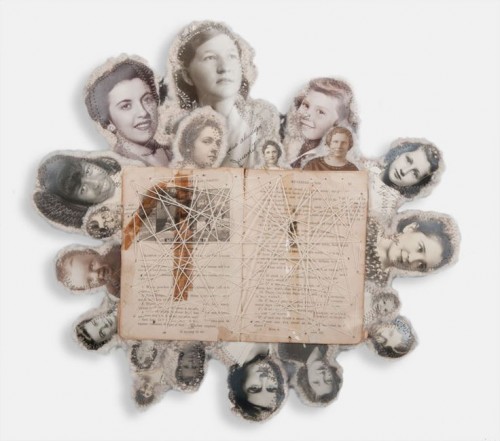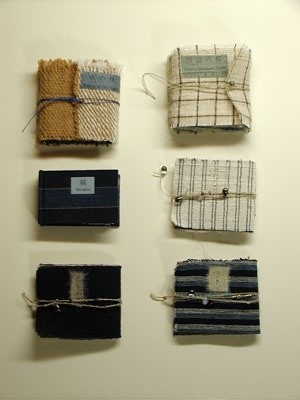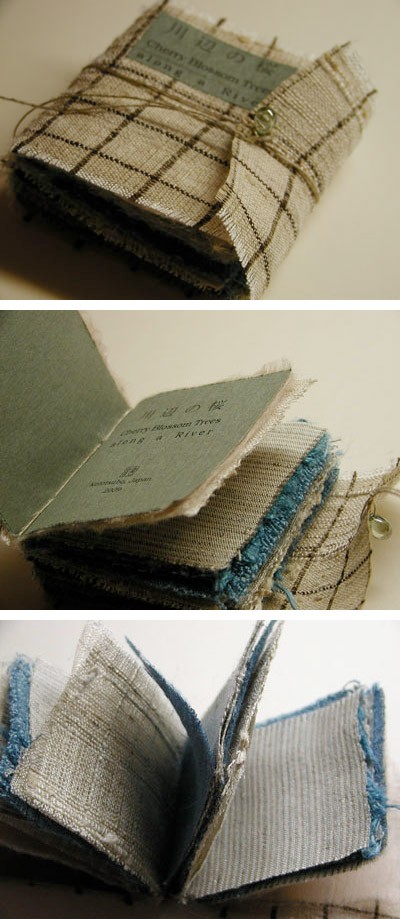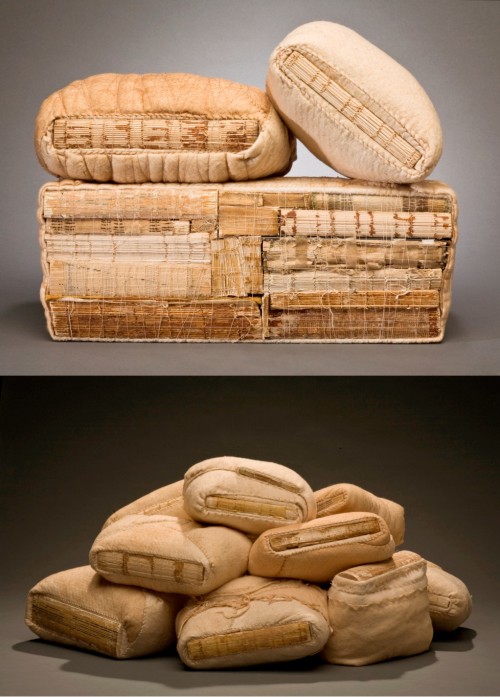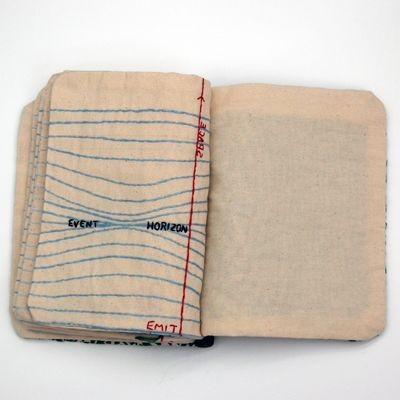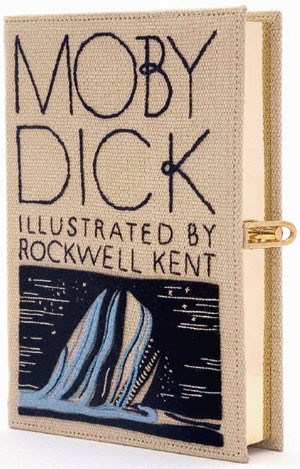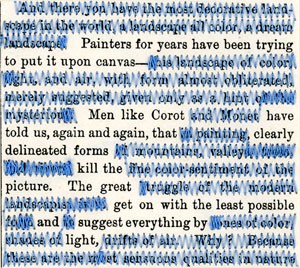I always enjoy looking at Lisa Kokin‘s book art. This is one of her “book collages,” Love Always Juanita. She has a nice explanation of her process
In my never-ending quest to find different ways to eviscerate books, I stumbled upon the book collage. First I find a book which interests me, either for some element of text, image or marginalia, or for the look of the book itself. Sometimes I remove some of the pages and glue and/or sew the book open to the particular page of interest. Other times I remove all the pages and use the inside covers as the collage surface. I build upon what initially interests me by layering images and text from the same or other books, found photos, and other small objects, using a variety of collage and transfer techniques. Often I scrape away and dig into the surface as well. Many of the books have sculptural protrusions and extensions because I feel that the shape of books should not be limited to a rectangle.
I am particularly attracted to the lowest of literary life forms, the Discarded Library Book. My favorites have “DISCARD” stamped on the inside front covers, and as if this isn’t insult enough, “DISCARD” stamped here and there on the inside as well. The largest number of book collages come from a series of citizenship workbooks tossed away by my local public library and rescued from extinction by an acquaintance who works there. These little volumes make all sorts of statements and promises about our country which are belied by history and current events. “Why do we elect honest men to office?” A statement like this is all I need to get my itchy fingers cutting, pasting, altering and subverting.

